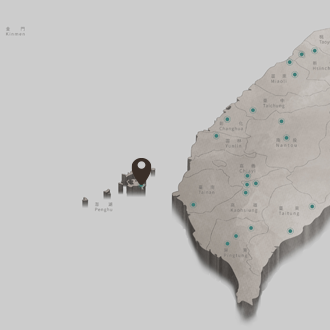
Magong City, Penghu
Lai Gangyu 賴剛鈺
Magong, Penghu County
In discussing the location of huan á siânn, Lai Gangyu advised that while it is technically in Magong, the more specific location is on Shetou Mountain in Fenggui Village, Pengnan, which has been developed into the Shetou Mountain Recreation Area. The Dutch built a fort and garrisoned troops in Penghu during the Kingdom of Tungning and Qing Dynasty periods and even installed a cannon battery. The location is home to mass French army graves and the Japanese cruiser Matsushima memorial plaque. When Fenggui residents provide offerings during the Ghost Festival at Sanguan and Wenwang Temples, they will also prepare offerings for the foreign soldiers on Shetou Mountain. The name literally means “Foreigner Fort”, but originally this was prefaced by the word “Dead”. Today, most older residents drop the word and refer to it simply as huan á siânn.
Lai Gangyu advised that the Taigi spoken on Penghu is Quanzhou dialect, which is quite different from the Zhangzhou dialect predominant on the island of Taiwan. In Taiwan Taigi, words have one of seven tones, most of which change when spoken adjacent to other words (tone sandhi) and the overall effect is a language with a lower pitch and more obvious throat sounds.

Taiwanese Taigi
Magong City, Penghu
Near Shetou Mountain in Fenggui Village, Pengnan

Please use the mobile phone to browse in landscape
to enter the website
